Abstract
Cyclic phosphorylation with phenazine methosulfate and noncyclic phosphorylation and reduction with ferricyanide were detected in isolated chloroplasts from greening bean leaves after 3 to 4 hours of illumination. Activity commenced when rapid synthesis of chlorophyll was initiated. Rates of photophosphorylation were comparable to mature levels by 15 to 18 hours of development. Photoreduction of ferricyanide attained a peak value by 12 hours of illumination and subsequently fell to normal levels by 15 to 18 hours. With ferricyanide, the P/e2 ratios were initially less than 0.1 but were close to 1.0 after 18 hours of illumination. The data suggested that photosystems I and II appeared concomitantly in the chloroplast but were not fully operative until later in development. Proplastids and immature chloroplasts exhibited high capacities to reduce ferricyanide in the dark. The rates of dark reduction rapidly diminished to low levels by 15 hours of illumination when normal rates of photochemical activity were observed. After a 2-to 3-day lag, a rapid increase in leaf fresh weight was noted at the time total chlorophyll content reached steady state values on a fresh weight basis. With fresh weight as an index of growth, primary leaves completed their development after 6 to 7 days of illumination.
Full text
PDF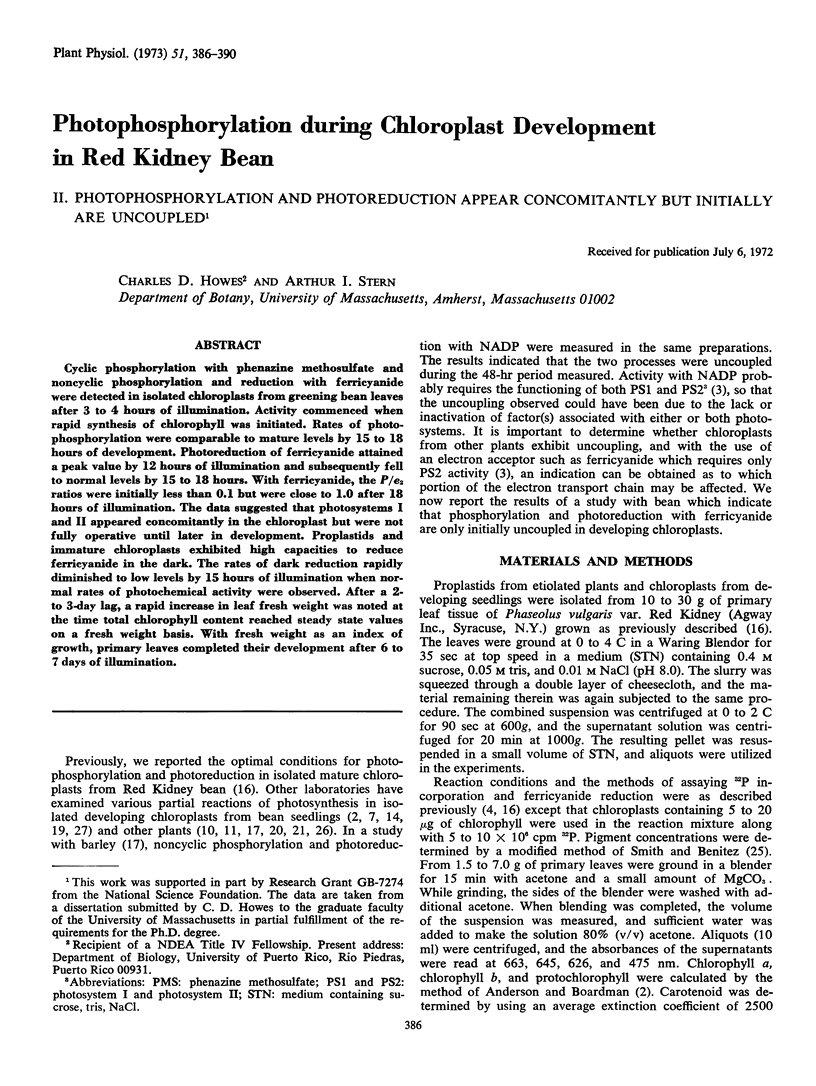
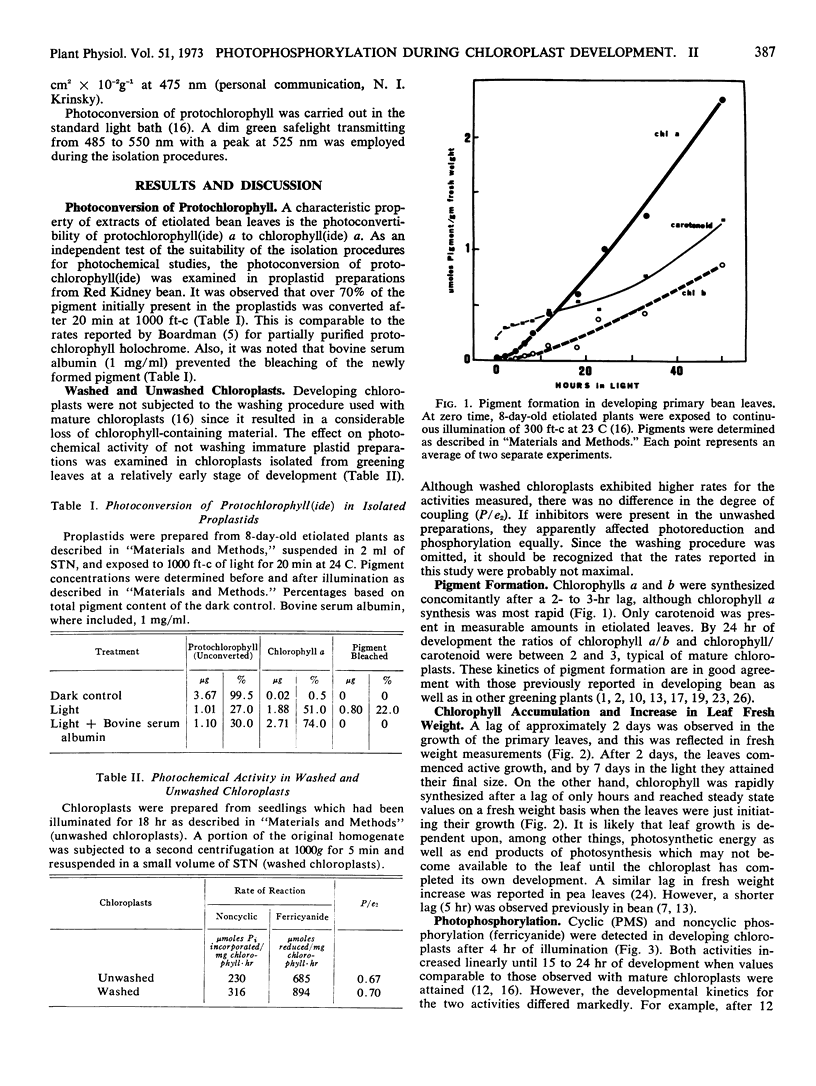
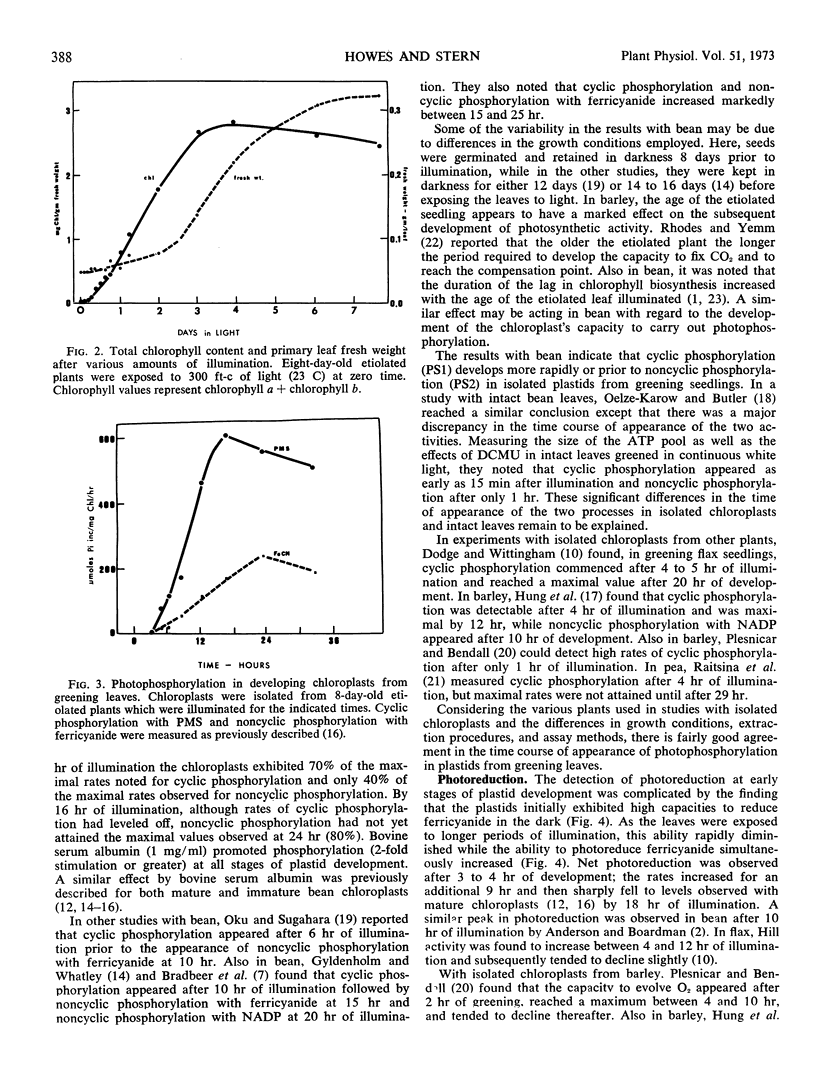
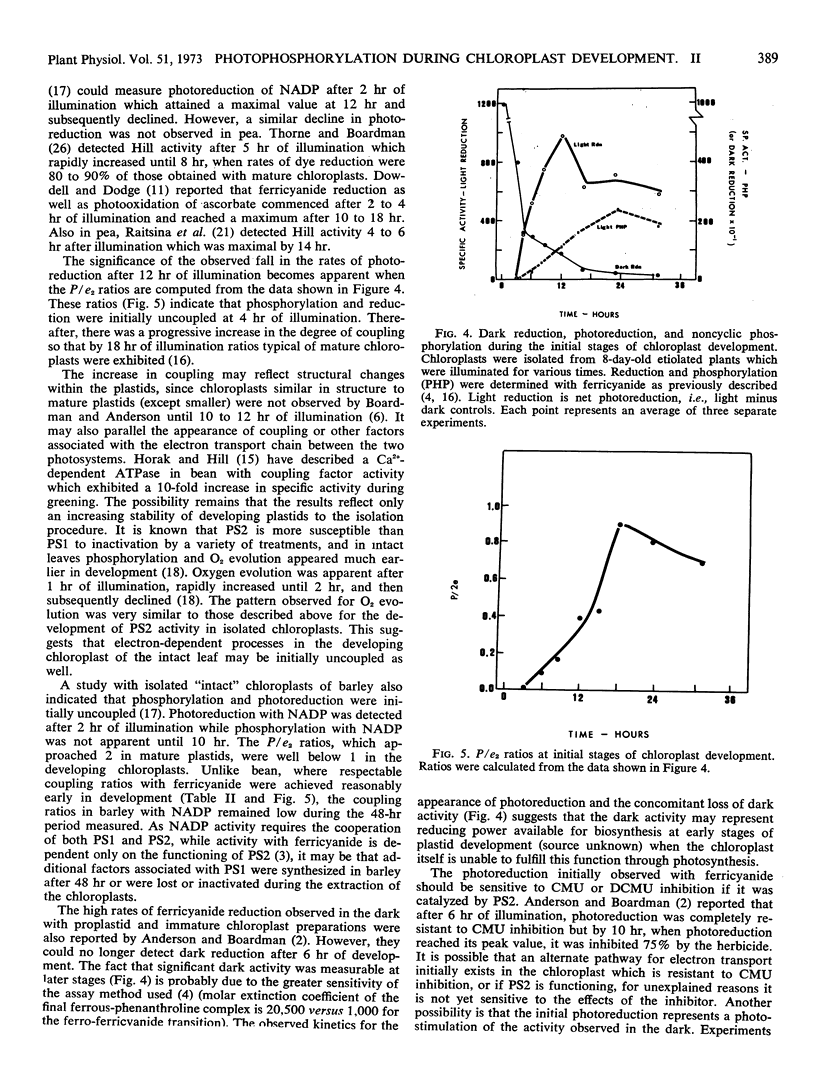
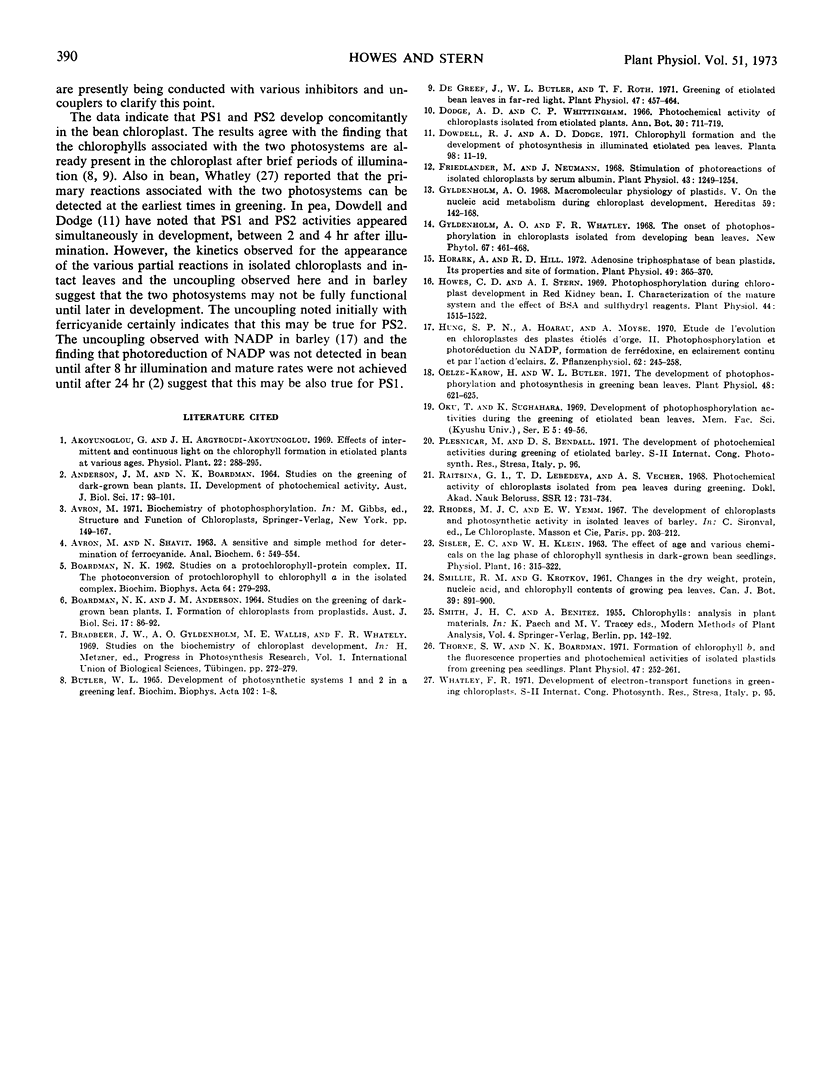
Selected References
These references are in PubMed. This may not be the complete list of references from this article.
- AVRON M., SHAVIT N. A SENSITIVE AND SIMPLE METHOD FOR DETERMINATION OF FERROCYANIDE. Anal Biochem. 1963 Dec;6:549–554. doi: 10.1016/0003-2697(63)90149-0. [DOI] [PubMed] [Google Scholar]
- BOARDMAN N. K. Studies on a protochlorophyll-protein complex. II. The photo-conversion of protochlorophyll to chlorophyll alpha in the isolated complex. Biochim Biophys Acta. 1962 Oct 22;64:279–293. doi: 10.1016/0006-3002(62)90737-0. [DOI] [PubMed] [Google Scholar]
- Butler W. L. Development of photosynthetic system 1 and 2 in a greening leaf. Biochim Biophys Acta. 1965 May 25;102(1):1–8. doi: 10.1016/0926-6585(65)90198-6. [DOI] [PubMed] [Google Scholar]
- De Greef J., Butler W. L., Roth T. F. Greening of etiolated bean leaves in far red light. Plant Physiol. 1971 Apr;47(4):457–464. doi: 10.1104/pp.47.4.457. [DOI] [PMC free article] [PubMed] [Google Scholar]
- Friedlander M., Neumann J. Stimulation of photoreactions of isolated chloroplasts by serum albumin. Plant Physiol. 1968 Aug;43(8):1249–1254. doi: 10.1104/pp.43.8.1249. [DOI] [PMC free article] [PubMed] [Google Scholar]
- Gyldenholm A. O. Macromolecular physiology of plastids V. On the nucleic acid metabolism during chloroplast development. Hereditas. 1968;59(1):142–168. doi: 10.1111/j.1601-5223.1968.tb02168.x. [DOI] [PubMed] [Google Scholar]
- Horak A., Hill R. D. Adenosine triphosphatase of bean plastids: its properties and site of formation. Plant Physiol. 1972 Mar;49(3):365–370. doi: 10.1104/pp.49.3.365. [DOI] [PMC free article] [PubMed] [Google Scholar]
- Howes C. D., Stern A. I. Photophosphorylation during Chloroplast Development in Red Kidney Bean. I. Characterization of the Mature System and the Effect of BSA and Sulfhydryl Reagents. Plant Physiol. 1969 Nov;44(11):1515–1522. doi: 10.1104/pp.44.11.1515. [DOI] [PMC free article] [PubMed] [Google Scholar]
- Oelze-Karow H., Butler W. L. The development of photophosphorylation and photosynthesis in greening bean leaves. Plant Physiol. 1971 Nov;48(5):621–625. doi: 10.1104/pp.48.5.621. [DOI] [PMC free article] [PubMed] [Google Scholar]
- Thorne S. W., Boardman N. K. Formation of chlorophyll B, and the fluorescence properties and photochemical activities of isolated plastids from greening pea seedlings. Plant Physiol. 1971 Feb;47(2):252–261. doi: 10.1104/pp.47.2.252. [DOI] [PMC free article] [PubMed] [Google Scholar]


